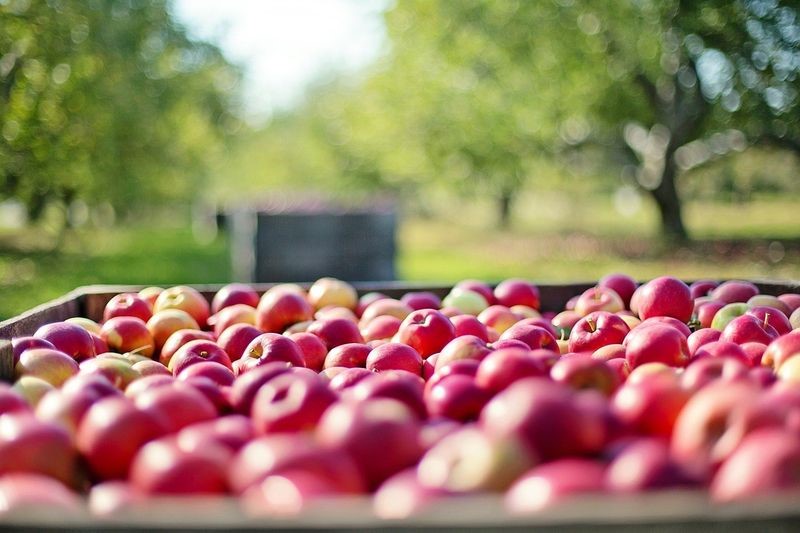Secretary of Agriculture Brooke Rollins says work continues to revise the draft dietary guidelines....
Farm Labor Costs Expected to Increase

In November, USDA-National Agricultural Statistics Services released the semi-annual Farm Labor Report (FLR). The report includes quarterly estimates of the number of hired workers, average hours worked per worker and average hourly wage rates. The report also provides an annual weighted average hourly wage rate for field workers, field and livestock workers combined, and all hired workers, based on the quarterly estimates. Of utmost importance to users of the H-2A visa program, the field and livestock workers’ combined wage rate for 2023 contained in the FLR becomes the Adverse Effect Wage Rate (AEWR) utilized in the H-2A program in 2024.
So, while the rates don’t become official until they are released by the Department of Labor in the Federal Register, usually around mid-December, the rates published in the Federal Register are typically unchanged from what is published in the Farm Labor Report. Given the ongoing overall tightness in the U.S. labor market, few would be surprised that the fiscal year 2023 U.S. average field and livestock workers’ combined wage rate rose, but the 5.6% fiscal year-over-fiscal year increase outpaced the 4.3% end-of-fiscal year-over-end-of-fiscal year growth in seasonally adjusted average hourly earnings of all private employees and will continue to put significant pressure on the bottom lines of farmers with significant labor needs.
The official U.S. unemployment rate in October 2023 was 3.9%, only slightly higher than February 2020’s pre-pandemic 3.5%. Certainly, a great deal of tumult was experienced in the labor market during the pandemic, with the unemployment rate reaching a painful high of 14.7% in April 2020, but thankfully those elevated rates didn’t last. The labor market settled back to 4% unemployment by January 2022. A change that does seem to have staying power, however, is an increased interest in entrepreneurship. There was a huge jump in the number of business applications in the U.S. starting around June 2020.
And while the massive increase lasted about a year, the number of monthly business applications remains well above pre-pandemic levels, even in the face of rising interest rates and elevated inflation. The growth hasn’t been just single employee businesses either; applications for high-propensity businesses, a subset of business applications with a high-likelihood of turning into a business with a payroll, are also up about 25% compared to pre-pandemic levels. The formation of new businesses is a good thing but adds additional competition for workers.
The U.S. national average wage rate has increased every year for the last 20 years. Since 2019, the yearly increases have averaged 5.9%, nearly double the rate of change in the earlier period.
In 2023, every state will have an AEWR in excess of $14 per hour. Last year we reported the same thing, except the dollar amount was $13 per hour. Ohio, for instance, will have an AEWR between $18 and $18.99.
While the H-2A program is utilized by farmers and ranchers across the U.S. for a variety of seasonal or temporary farm work, it is most closely associated with the fruit and vegetable sector, often referred to by the short-hand phrase, specialty crops. With the release of the FLR we now know that labor costs will also be rising. With labor costs accounting for up to 38.5% of total production expenses in the fruit and tree nuts sector and 28.5% in the vegetable and melons sector this increase is no small part of the budget.
Meanwhile, DOL and the Department of Homeland Security have combined to publish six new costly regulations that will have a significant impact on the H-2A community in 2023 alone. Altogether, 2024 is likely to be a doozy for farmers and ranchers with labor needs.
EDITOR’S TAKE:
Labor shortages abound in the U.S. post-pandemic era. No matter the industry, good, reliable help is difficult to find. Agricultural labor is even more challenging. For specialty crop producers it is the seasonal nature of their demand that complicates the picture. Although, in many instances seasonal crews are hired in the southern states and work their way north during the harvest season. For others the challenge can be the longer hours and working conditions. Some find the regulatory environment very difficult to maneuver. No matter the circumstance, agriculture still has a large demand for a qualified labor force that is difficult to attract. It appears that 2024 will continue to be a challenge as well. Be aware that farmers/ranchers are often looking for good, reliable help, even though it will cost them more going forward. They are also looking to technology and alternative marketing to help relieve some of the pressure from the current labor situation. Congress will also need to pass legislation to help reform some of the outdated laws and regulations currently restricting labor supply on the farm.








